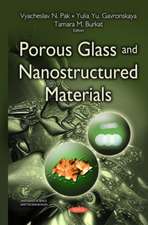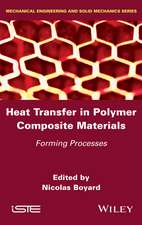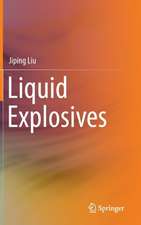Vision: Human and Electronic: Optical Physics and Engineering
Autor Albert Roseen Limba Engleză Paperback – 25 noi 2012
Preț: 722.58 lei
Preț vechi: 881.19 lei
-18% Nou
Puncte Express: 1084
Preț estimativ în valută:
138.26€ • 144.37$ • 114.17£
138.26€ • 144.37$ • 114.17£
Carte tipărită la comandă
Livrare economică 15-29 aprilie
Preluare comenzi: 021 569.72.76
Specificații
ISBN-13: 9781468420395
ISBN-10: 1468420399
Pagini: 216
Ilustrații: XV, 197 p.
Dimensiuni: 152 x 229 x 11 mm
Greutate: 0.3 kg
Ediția:Softcover reprint of the original 1st ed. 1973
Editura: Springer Us
Colecția Springer
Seria Optical Physics and Engineering
Locul publicării:New York, NY, United States
ISBN-10: 1468420399
Pagini: 216
Ilustrații: XV, 197 p.
Dimensiuni: 152 x 229 x 11 mm
Greutate: 0.3 kg
Ediția:Softcover reprint of the original 1st ed. 1973
Editura: Springer Us
Colecția Springer
Seria Optical Physics and Engineering
Locul publicării:New York, NY, United States
Public țintă
ResearchCuprins
1 · The Visual Process.- 1.1. Introduction.- 1.2. Quantum Limitations on the Visual Process.- 1.3. A Summary Experiment.- 1.4. A Second Experiment.- 1.5. Resolution, Signal-to-Noise Ratio, and Test Patterns.- 1.6. An Absolute Scale of Performance.- 1.7. Geometric versus Noise Limitations to Performance.- 1.8. Beyond the Visible Spectrum.- 1.9. Summary.- 1.10. References.- 2 · Human Vision.- 2.1. Introduction.- 2.2. Optical Parameters.- 2.3. Performance Data.- 2.4. Quantum Efficiency of Human Vision.- 2.5. A Preferred Method for Measuring Quantum Efficiency.- 2.6. A Comparison of Estimates of Quantum Efficiency.- 2.7. Dark Adaptation.- 2.8. Automatic Gain Control.- 2.9. Visual Noise.- 2.10. Afterimages.- 2.11. Visibility of High-Energy Radiations.- 2.12. Vision and Evolution.- 2.13. Summary.- 2.14. References.- 3 · Television Camera Tubes.- 3.1. Introduction.- 3.2. Scanning Discs and Dissector Tubes.- 3.3. Iconoscope.- 3.4. Image Iconoscope.- 3.5. Orthicon.- 3.6. Image Orthicon.- 3.7. Image Isocon.- 3.8. Intensifier Image Orthicon.- 3.9. Bombardment-Induced Conductivity.- 3.10. Vidicons.- 3.11. Solid-State Self-Scanned Arrays.- 3.12. Summary.- 3.13. References.- 4 · Photographic Film.- 4.1. Introduction.- 4.2. Sensitivity and Signal-to-Noise Ratio.- 4.3. Resolution, Signal-to-Noise Ratio, and Effective Passband.- 4.4. Threshold Properties of Photographic Grains.- 4.5. Fog.- 4.6. High-Energy Radiations.- 4.7. Comparative Sensitivities of Film, Television Camera Tubes, and the Human Eye.- 4.8. Summary.- 4.9. References.- 5 · Comparative Noise Properties of Vision, Television, and Photographic Film.- 5.1. Statement of Problem.- 5.2. A Proper Measure of the Signal-to-Noise Ratio in a Television Picture.- 5.3. A Comparison of Arrangements for Noise Reduction.- 5.4.Effect of High Contrast on the Visibility of Noise.- 5.5. Noise in Dark Areas.- 5.6. Noise versus Brightness of Reproduced Pictures.- 5.7. Summary.- 5.8. References.- 6 · Image Multipliers.- 6.1. Introduction.- 6.2. Varieties of Image Multipliers.- 6.3. Typical Performance of a Three-Stage Image Multiplier.- 6.4. Summary.- 6.5. References.- 7 · Solid-State Photon Counters.- 7.1. Introduction.- 7.2. Noise Currents and Charges.- 7.3. Photoconductive Photon Counter.- 7.4. An Analysis of 1/f Noise.- 7.5. Photon Counting by MOS Triodes.- 7.6. Non-Photon-Counters.- 7.7. Summary.- 7.8. References.- 8 · Solid-State Photographic Systems, Light Amplifiers, and Display Systems.- 8.1. Introduction.- 8.2. Blocking Contacts.- 8.3. Sensitivity Aspects of Blocking Contacts.- 8.4. Ohmic Contacts.- 8.5. Sensitivity Aspects of Ohmic Contacts.- 8.6. Special Arrangements.- 8.7. Null Systems.- 8.8. Summary.- 8.9. References.- 9 · Solid-State Photomultipliers.- 9.1. Introduction.- 9.2. Multiplication in Semiconductors.- 9.3. Multiplication in Insulators.- 9.4. Rates of Energy Loss by Hot Electrons.- 9.5. Summary.- 9.6. References.- 10 · Vision: Past, Present, and Future.- 10.1. Introduction.- 10.2. Human Vision.- 10.3. Photographic Vision.- 10.4. Electronic Vision.- 10.5. The Need for High Quantum Efficiencies.- 10.6. Conclusion.- 10.7. References.




















